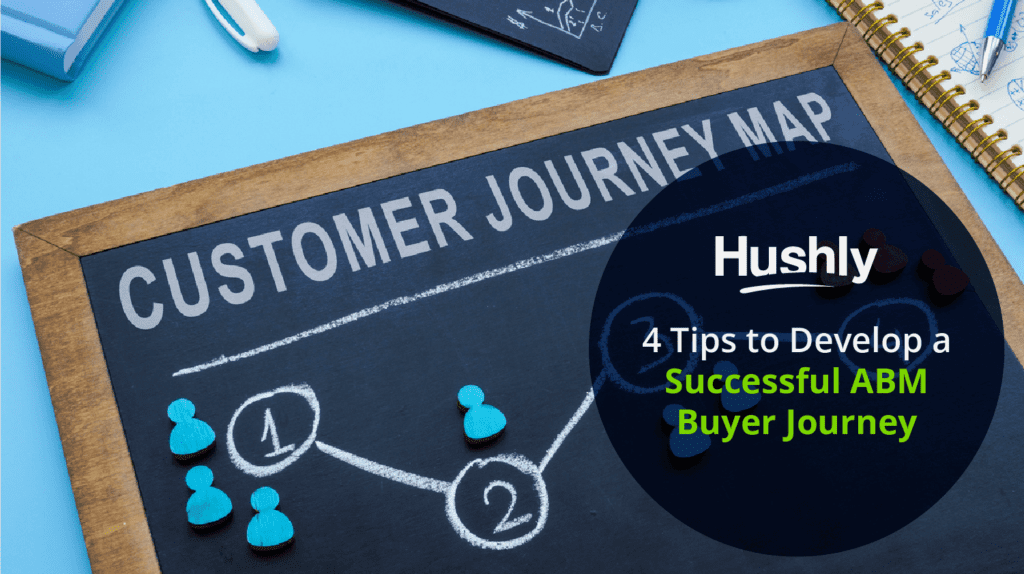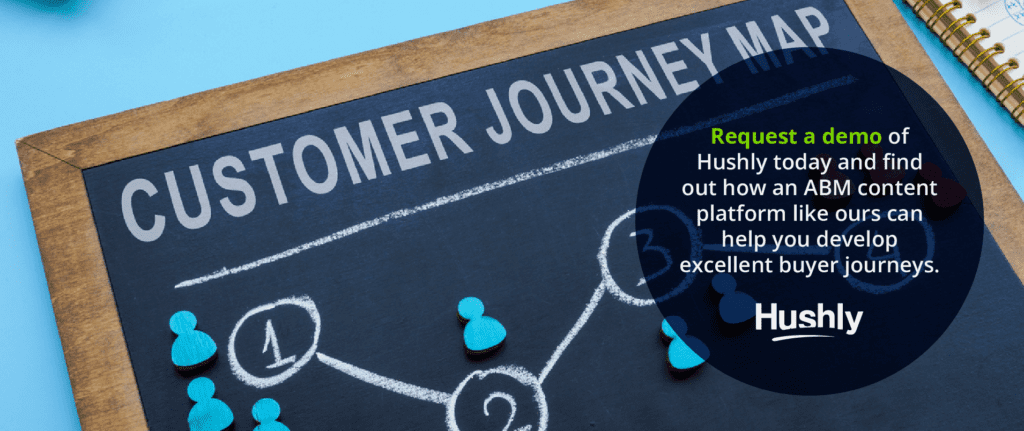A customer who first encounters your company is just getting started on their ABM buyer journey. This journey will either lead them to the checkout screen or the big red X at the top corner of their screen. The difference can mean everything to your business’s bottom line.
The first thing to realize is that the buyer journey is going to happen whether you intentionally design the experience or just let the chips fall where they may. When you go out of your way to develop your buyer’s journey and make sure it’s as streamlined as possible, you immediately increase the odds of converting that customer.
However, the age of personalization is upon us. This means that it’s no longer enough to simply place marketing content on your website and hope customers find it. Some might, but many won’t. Instead, using the principles of account-based marketing, you should aim to develop a web of multi-channel experiences that will guide the customer from beginning to end.
Today’s blog will explain exactly what we mean when we talk about an ABM buyer journey, the benefits of creating one intentionally, and some tips for mastering your ABM buyer journey and increasing conversions.

What is a B2B ABM Buyer Journey?
Imagine searching the web for a software program that will help your business develop new leads and scale the management of those leads with automation.
The first few links you come across look good: The websites are well designed, and there’s a lot of content on the blogs that you could spend some time searching through. Depending on the level of research you’re performing, you may even decide to spend some time reading case studies before moving on to the next potential links.
Then, you come across a link for a company that has intentionally developed a buyer journey from scratch.
From the moment you land, you’re greeted by a personalized webpage that already has information on your company, the business you conduct, and the identified pain points that you’re looking for remedies for. Not stopping there, the website recommends several pieces of content in the form of videos, blogs, and infographics that quickly display their recommended solutions and the estimated ROI their product could bring you.
Notice the difference?
In both cases, you’ve experienced a buyer journey. However, only in the second experience did you require little to no effort before you were already being suggested solutions and hard data that could influence your decision. This is a perfect example of an intentionally designed buyer journey that will increase interest in a product and drive conversions.
Buyer Journey vs. Sales Funnel
The sales funnel is an important concept to understand, but it’s distinct from the buyer journey.
The buyer journey is essentially the experience a customer has when traveling through your sales funnel. A customer shouldn’t realize they’re in a sales funnel at all. Instead, they should experience a seamless transition from awareness to evaluation that feels natural and personalized to their unique needs.
Why Should You Intentionally Develop an ABM Buyer Journey?
The marketing world is shifting toward personalization more and more.
As technology makes a higher level of personalization possible, more customers will get to experience it. Once these buyers have a taste for this experience, the demand for it’s only going to grow.
This is because personalization solves many problems from a customer’s standpoint:
- Customers don’t know if the time they spend researching your product is going to be worth their time. They could spend hours reading case studies and blogs only to decide they don’t like your content or the vision you have for your partnerships. This is wasted time. The possibility of this wasted time means customers have to be selective over what they read and how long they spend on each product.
- There’s too much information online to know for sure when you’ve searched hard enough. Essentially, customers have to eventually settle on the best option they find, which may not be their best choice.
- New solutions advance so quickly that potential customers may not even know they exist. This gives a natural edge to early adopters and those targeted effectively by ads.
- B2B buyers need to focus on long-term growth to stay competitive. This means relationship-building is more valuable than one-off transactions that may or may not boost marketing ROI right away.
Since personalization is so valuable, it makes sense that a personalized journey is the best way to demonstrate value and knowledge to customers immediately, without the need for them to invest too many resources to find out if your company is a good fit.
4 Tips for a Successful ABM Buyer Journey
Now that you have an idea of the ABM buyer journey framework and why it matters, here are four actionable tips you can use to start developing an ABM buyer journey today.
1. Focus on Personalization
The biggest edge you can give your business is a level of personalization that will impress every customer. This means identifying pain points, unique challenges, and presenting solutions that will increase ROI in the long and short term. Support your claims with data and evidence proving that your methods will work for this company.
When personalizing content and marketing, focus on telling stories that place the buyer at the center of the narrative. The more easily you can trigger the pain points that your customers struggle with daily, the more effective your proposed solutions will feel.
2. Engage Accounts on a Human Level
Remember that account-based marketing is meant to work on building relationships instead of just increasing conversions. Focus on developing the company at the level of a partnership. This will improve your credibility and trustworthiness in the eyes of your customers.
3. Map the Journey from Awareness to Evaluation
Your journey should be deliberate and carefully crafted from beginning to end. Put yourself in the shoes of your ideal customer to find out how they might become aware of your product and navigate through your website.
Combine this hands-on approach with a deep analysis of data and metrics to ensure you’re on the right track.
4. Track Data and Metrics to Push Toward Optimization
Your ABM marketing campaigns will never be 100% perfect. Instead, you should look at every customer journey (whether it leads to a sale or not) as an opportunity to find out more about how your customers shop, what needs they have, and how you can better communicate your solutions to them.
Do this by tracking data from beginning to end. Focus on metrics like website engagement, content performance, and customer lifetime value or churn rate. These kinds of hard data combined with marketing expertise will give you indicators of where you need to improve.
Bonus Tip: Use an ABM Content Platform Like Hushly
Our final recommendation is to invest in an ABM content platform like ours here at Hushly.
An ABM content platform can do much of the hard work of designing and executing ABM for you, including:
- Automatically engaging leads in real time
- Developing personalized web experiences with 0 technical knowledge required
- Nurturing leads by deploying relevant and contextual marketing content
- Improving your website with dynamic content hubs that can change based on the unique stage of the buyer’s journey.
Request a demo of Hushly today and find out how an ABM content platform like ours can help you develop excellent buyer journeys.




